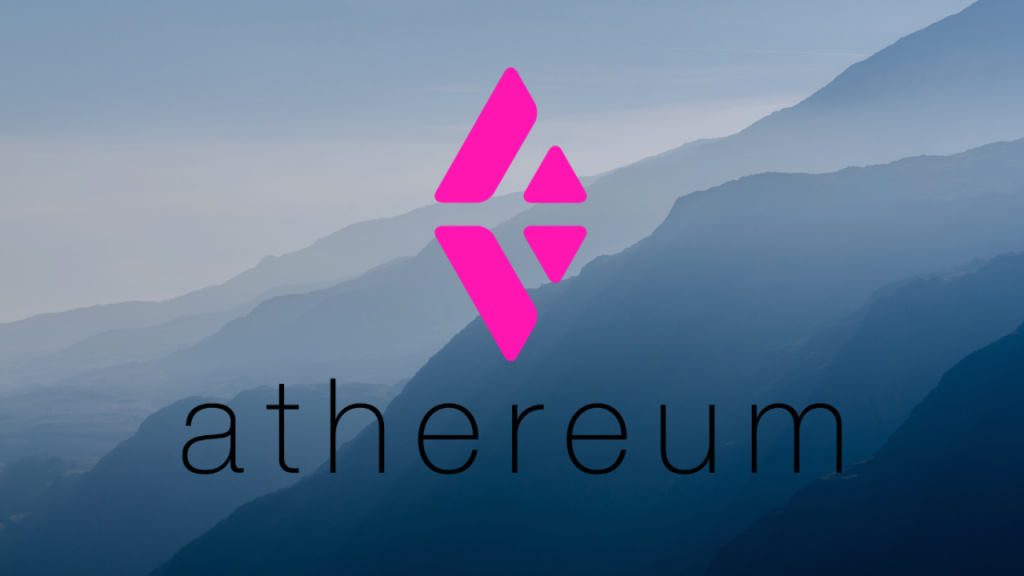Avalanche – The Internet of Finance
Today we will introduce the basic attributes of the Avalanche protocol – a relatively new innovative blockchain platform whose main motto is extremely high scalability and speed of transaction verification without having to give up decentralisation or security.

History
The Avalanche protocol, along with AVAX, the network’s native token, was created by Ava Labs, founded by Cornell University professor Emin Gün Sirer and two computer science doctoral students, Kevin Sekniqi and Maofan “Ted” Yin.
As early as 2002, E.G. Sirer, along with V. Vishnumurthy and S. Chandrakumar, worked to create a conceptual peer-to-peer virtual currency called Karma. The Karma digital currency was the first currency to use the Proof-of-Work system to issue new coins.
However, at that time, the PoW system was used only to issue new coins and was not used as a consensual network protocol. Karma was created shortly after the terrorist attacks of 11 September, so it was very difficult to raise funds for its development.
Over the years, however, Sirer has become a prominent and respected figure in the field of cryptocurrencies. For example, he published a research paper outlining the security vulnerabilities of the DAO platform. However, no one took his warnings seriously, which subsequently resulted in the hacking of the DAO platform, in which hackers stole a total of 3.6 million ETH. Additionally, he has proposed consensus adjustments for Bitcoin or Ethereum.
In 2018, he founded his own company, Ava Labs, and in 2019 created the Avalanche cryptocurrency itself. At the beginning of February 2019, the so-called “seed sale “was launched, i.e. the initial sale of tokens to private investors. In September 2020, the Avalanche Mainnet was officially launched.
What Is Avalanche?
Avalanche is an innovative blockchain ecosystem that has been designed to function as a secure, globally distributed and decentralised network. The developers themselves refer to the project as a “platform of platforms”. The protocol uniquely uses three different blockchains to create an interoperable and trustworthy environment on which developers can build. In addition, Avalanche offers payment solutions within the network itself using the native AVAX network token.
Avalanche was created to address several of the majority problems found in most blockchain networks today. The platform fights centralization and provides an alternative to networks such as Ethereum. Avalanche seeks to address the shortcomings of this network and provide even greater programmability and scalability.
Key Characteristics
Avalanche was created as a platform that allows anyone to create their own blockchain. The basic features of the protocol include:
- Modularity – Avalanche allows anyone to use the network’s “building blocks” to create their own, standardised blockchain optimised for a particular application. These newly created blockchains are interoperable and exist within a common blockchain network. Therefore, Avalanche is an ecosystem of blockchains and can be constantly expanded to meet the specific needs of developers.
- Scalability and security – Avalanche blockchain uses a Proof-of-Stake (PoS) consensus mechanism to ensure blockchain protection. This system works reliably thanks to a vast number of validators in the network, which ensures that the network is resistant to attacks and, at the same time, reliable and secure. Avalanche can process approximately 4,500 transactions per second, which is much more than all competing blockchains.
- Performance – Avalanche has created a new set of protocols, called the “Snow family”, that allows all blockchains built within the Avalanche ecosystem to process thousands of transactions per second.
- Sustainability – Avalanche uses an energy-efficient, eco-friendly, Proof-of-Stake consensus instead of the Proof-of-Work algorithm.
- Smart contract support – Supports the creation of smart contracts in the Solidity programming language and the use of Etherea programming tools such as Remix, Metamask or Truffle.
How Does Avalanche Work?
Avalanche uses a triple blockchain strategy to simplify network development processes. All three blockchains are authenticated and secured via the Primary Network. The main protocol network is a type of subnet that verifies all built-in blockchains running on the Avalanche platform. An important part of the main protocol network are validators, who stake their tokens and thus participate in validating the system.
The triple blockchain system consists of:
- Exchange chain (X-chain) – A decentralised blockchain designed to be easy to program. This network allows anyone to create various smart digital assets. These new assets can be, for example, stablecoins, utility tokens, NFTs, wrapped tokens, and others.
- Platform chain (P-chain) – Blockchain responsible for the smooth operation of the network. It mainly serves to coordinate validators in the network, maintain and monitor active subnets, or create new subnets.
- Contract Chain (C-chain) – Created to simplify development for developers coming from Ethereum’s environment. C-chain is a method of conversion chain that is compatible with all essential Ethereum tools. Users can seamlessly migrate their decentralised applications to this blockchain. The network supports popular Ethereum tools, such as MetaMask, Web3.js, Remix, or Embark.

Avalanche Consensus Protocol
The Avalanche consensus protocol combines the best features of the Nakamoto consensus (robustness, decentralisation) and the classic consensus protocols (throughput, low latency or low memory requirements).
The basic feature of these protocols is high speed. Avalanche protocols reach an irreversible consensus in less than two seconds, faster than all currently available protocols. Avalanche allows you to process thousands of transactions per second (up to 4,500 TPS), which is throughput at the level of current payment systems.
The Avalanche Consensus Protocol operates on the principle of repeated random voting of sub-samples of validators. When any validator on the network sees a transaction that needs to be verified, it randomly selects a small subset of other validators to decide whether the transaction is valid. Each of the selected validators will have their own opinion on the validity of any transaction. Selected validators are weighted according to the amount of their deposit (staked AVAX tokens), while this methodology allows the protocol to theoretically extend the scalability to millions of participants.
When a sufficiently large portion of the subset of validators responds that the transaction is valid and should be accepted, the original validator will agree to accept the transaction. This validator now considers the particular transaction valid. If approached by another validator in the future (it will be part of a subset of validators), it will reply that the transaction is valid and should be accepted.
The same goes for a reversed scenario – if a large enough portion of the subset of validators responds that the transaction is invalid, then the original validator will decline the transaction and recommend all other future validators to decline the transaction as well. The protocols are memory-efficient and consume a minimum amount of electricity.
Snowman Consensus Protocol
Snowman is an optimised protocol for reaching consensus on the network – it is highly efficient, scalable, and ideal for smart contracts. Snowman works on the principle of the Avalanche consensus protocol. It is used on the Platform chain (P-chain) and the Contact chain (C-chain).
Athereum
Athereum is a subnet of the Avalanche network, the “friendly fork” of Ethereum, using the Avalanche consensus mechanism. The Athereum developers consider it a friendly experiment because they themselves are supporters of the Ethereum ecosystem. In this way, they try to help Ethereum solve its shortcomings.
It is the use of the above-mentioned Avalanche Consensus Protocol that allows this subnet to have high throughput and the ability to reach consensus on the network almost immediately. Athereum developers use the same development tools used in the Ethereum network (Web3js, MyEtherWallet, MetaMask). In addition, when a specific application operating on Ethereum is transferred to Avalanche, all existing ETH holders are entitled to ATH tokens (Athereum tokens) in equivalent value.

Athereum’s intention is not to replace Ethereum but to provide an alternative environment for running decentralised applications with higher throughput and faster consensus. The intention is to inspire and motivate to increase research and development of decentralised applications as well as to optimise the Ethereum Virtual Machine (EVM) itself.
Native Network Token – AVAX
AVAX is the native token of the Avalanche network. Users use this token to receive rewards (staking) and pay fees. An important feature of this token is its limitations. Unlike most other POS consensus platforms, which have an unlimited supply and are constantly increasing it, Avalanche has a fixed limited supply of 720 million tokens.
The first 360 million tokens were issued at launch (the vast majority locked in vesting periods between 1-10 years). Another 360 million will be released through staking. As with bitcoin, staking rewards will decrease over time as the number of tokens in circulation grows.
In addition to the limited offer of AVAX tokens, as with Bitcoin, AVAX also differs in that it burns tokens for fees and all types of primary network operations – for example, burning transaction fees, network rental fees, or for creating subnets and individual blockchains.
Invest With Fumbi Today
If you are considering investing in cryptocurrencies, Fumbi is here for you. Our algorithm-managed portfolio accurately tracks the price movements of the entire crypto market.
Fumbi is the first of its kind to offer cryptocurrencies to the general public, even at small deposits. Investing in cryptocurrencies through Fumbi is very easy and minimises risks.
You can start with a deposit of as little as €50.
INVEST WITH FUMBIDid you come across a term you didn’t understand? Don’t worry. You can find all essential terms regarding cryptocurrencies in our Fumbi Dictionary.

 3 min •
3 min •



